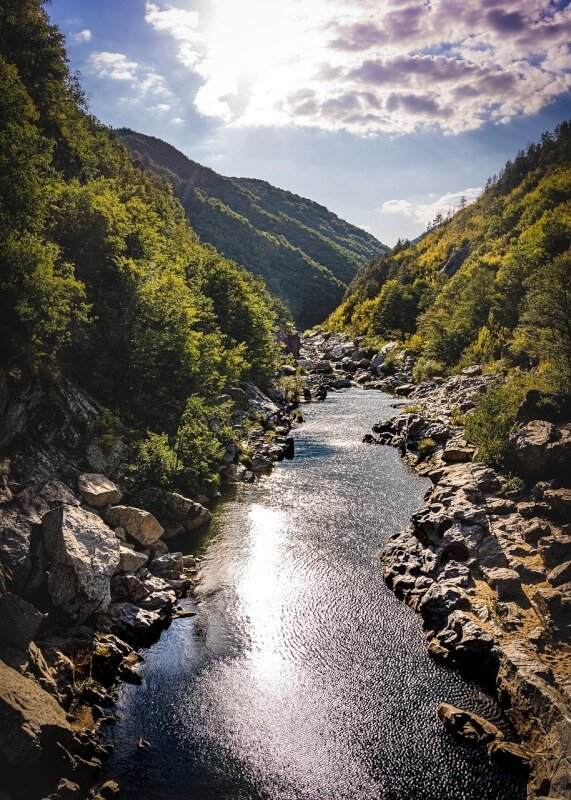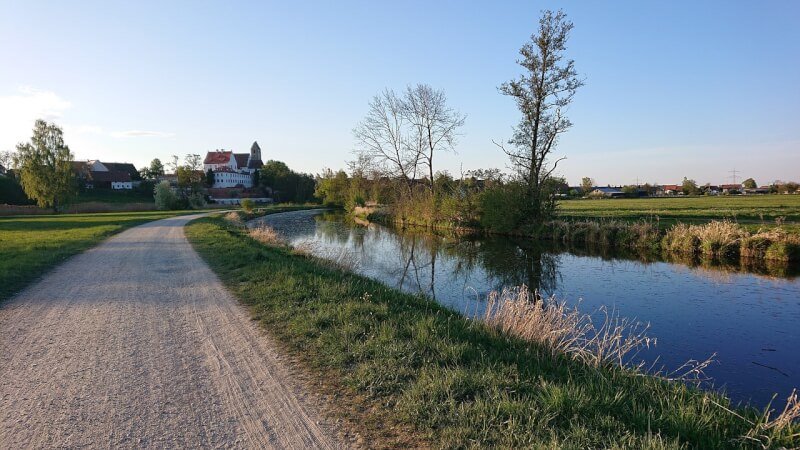Imagine finding yourself in the middle of the wild, surrounded by the untamed beauty of nature. The question is, would you be prepared to survive? In this article, you will be introduced to a remarkable resource, the “Field Guide to Wilderness Survival.” Packed with invaluable information and expert advice, this guide is your ticket to mastering the art of surviving in the great outdoors. From essential survival skills to identifying edible plants and building a shelter, this field guide has got you covered. So, let’s embark on an adventure together and unlock the secrets to thriving in the wilderness.
Preparation

Assessing the environment
Before embarking on any wilderness adventure, it is crucial to assess the environment you will be entering. Pay attention to the terrain, climate, and potential hazards, such as wildlife or extreme weather conditions. By understanding the environment, you can better prepare for the challenges that may arise and make informed decisions throughout your journey.
Creating a survival kit
A well-prepared survival kit is an essential part of any wilderness adventure. It should contain items that will help you meet your basic needs in an emergency situation. Your survival kit should include essentials such as a knife, fire-starting materials, a compass, a map of the area, a first aid kit, water purification tablets, and high-energy snacks. Additionally, consider including items that are specific to the environment you will be in, such as bug spray for areas with high mosquito activity or extra warm clothing for cold climates.
Developing wilderness skills
In addition to carrying the necessary gear, it is essential to develop wilderness skills that will help you navigate the challenges of survival. Learning basic navigation techniques, such as using a compass and reading maps, can prevent you from getting lost. Familiarize yourself with different methods of fire starting, from using matches to utilizing primitive techniques. Furthermore, learning how to identify edible plants, set traps, and fish can significantly increase your chances of finding food in the wild. Taking the time to develop these skills before venturing into the wilderness will greatly enhance your survival capabilities.
Shelter
Identifying suitable shelter locations
Finding a suitable shelter location is vital to protect yourself from the elements and maintain body temperature. Look for natural features that can provide natural shelter, such as overhangs or caves. Avoid areas prone to flooding or potential falling hazards, such as dead trees. Additionally, consider the proximity to water sources and the availability of resources for constructing a shelter.
Constructing a makeshift shelter
If a natural shelter is not available, constructing a makeshift shelter is essential. Using materials such as large branches, leaves, and brush can create a protective barrier from wind and rain. The lean-to is a simple and effective shelter design that involves propping a long branch against a sturdy base and covering it with additional foliage for insulation. Remember to create a raised sleeping platform to keep you off the ground and away from potential moisture or pests.

Using natural materials for shelter
Utilizing natural materials in your shelter construction can enhance its effectiveness. Fir branches and leaves can provide insulation, while evergreen boughs make an excellent waterproof roof. Use long pieces of flexible bark or vine to tie structures together, ensuring stability. By making the most of the resources available in your surroundings, you can create a comfortable and effective shelter to protect you from the elements.
Fire
Importance of fire in wilderness survival
Fire is essential for survival in the wilderness. It provides warmth, illuminates the surroundings, and can be used for cooking food and purifying water. Fire also acts as a psychological boost, boosting morale and providing a sense of comfort and security. When planning your wilderness journey, ensure you have the means to start and sustain a fire.
Gathering and preparing firewood
When gathering firewood, it is vital to collect both tinder, kindling, and fuel. Tinder refers to dry, flammable materials such as dry grass, leaves, or small twigs that easily catch fire. Kindling consists of slightly larger sticks and branches that will sustain the initial flame. Finally, fuel refers to larger logs or pieces of firewood that will keep the fire burning for an extended period. Collect an ample supply of each type of wood to ensure the fire remains sustainable.
Building different types of fire structures
There are various fire structures you can build depending on your needs and the available resources. The teepee structure is a classic choice, consisting of tinder and kindling arranged in a cone shape, with larger sticks placed around the base. The log cabin structure involves alternating layers of kindling and larger logs, creating a stable structure that burns steadily. Experiment with different fire structures to determine which works best for your specific situation.
Fire starting methods
Having multiple fire starting methods in your survival kit is crucial, as conditions may vary and certain methods may be more effective than others. Matches, lighters, and ferrocerium rods are reliable and convenient options. Additionally, learning primitive fire-starting techniques, such as using a bow drill or hand drill, can be invaluable in situations where modern fire-starting tools are unavailable. Practice these methods beforehand to build confidence and increase your chances of success.
Water

Finding and collecting water sources
In a survival situation, finding and collecting water is of utmost importance for hydration and overall well-being. Look for natural water sources such as rivers, streams, or lakes. Pay attention to signs of animal activity, as they often lead to water sources. In the absence of visible water, dig in low-lying areas or areas with lush vegetation to potentially find groundwater.
Water purification techniques
While natural water sources may seem tempting, it is essential to purify the water before consuming it. Boiling water for at least five minutes will kill most pathogens. Filtering the water through a cloth or using a portable water filter can also remove impurities. Additionally, chemical water purification tablets can effectively disinfect water and make it safe for consumption. Familiarize yourself with various purification techniques to ensure you have the means to obtain safe drinking water in the wilderness.
Emergency water procurement methods
In dire situations where no water sources are readily available, it is crucial to know alternative methods for water procurement. Collecting dew or rainwater using a tarp or a plastic bag tied around foliage can provide a small amount of water. Additionally, digging a solar still involves digging a hole in the ground, placing vegetation inside, and covering it with a plastic sheet. The sun’s heat causes condensation, which collects on the underside of the plastic and can be collected for drinking. While these methods may yield limited quantities of water, they can be life-saving in emergency situations.
Food
Foraging for edible plants
Knowing how to identify edible plants in the wild can provide an essential source of food. Familiarize yourself with local flora and learn to recognize edible plants, such as dandelions, wild berries, or cattails. It is crucial to positively identify plants before consuming them to avoid potential poisoning. Carry a field guide on edible plants specific to the region you will be exploring to assist with identification.
Hunting and trapping small game
Hunting and trapping small game can be an effective way to procure meat in the wilderness. Learn about local wildlife and their habits to increase your chances of success. Basic trapping techniques, such as snaring or using deadfall traps, can capture animals without the need for complex equipment. Practice ethical hunting and follow local regulations to ensure sustainability and respect for wildlife.

Fishing techniques
Fishing is another viable option for obtaining food in the wild. Familiarize yourself with local fish species, their feeding habits, and the best techniques for catching them. Carry fishing lines, hooks, and lures in your survival kit. Alternatively, you can fashion a makeshift fishing rod using natural materials available in your surroundings, such as branches and vines.
Preparing and cooking wild game
Once you have procured meat in the wilderness, it is crucial to prepare and cook it properly to avoid the risk of foodborne illnesses. Ensure the meat is cooked thoroughly and reaches the appropriate internal temperature to kill any potential pathogens. A fire is an excellent tool for cooking meat, whether on a makeshift grill or by using skewers to roast it directly over the flames. Take precautions to handle and store meat safely to prevent spoilage and maintain its nutritional value.
Navigation
Using natural landmarks
When navigating in the wilderness, natural landmarks can serve as reliable references. Mountains, rock formations, or distinctive trees can help you maintain your bearings and determine your direction of travel. Familiarize yourself with significant landmarks or create mental markers as you explore your surroundings to facilitate easy navigation.
Navigational tools and techniques
Carrying navigational tools such as a compass and a map is crucial for accurate navigation in the wilderness. Learn how to read a map and use a compass to determine your route and avoid getting lost. Additionally, consider using other navigational tools, such as a GPS device or a handheld altimeter, for enhanced accuracy and reliability. Practice using these tools in different environments to build confidence in your navigational skills.
Navigating without a compass
In the event of losing or not having access to a compass, there are alternative methods for navigating in the wilderness. Learning how to navigate using the stars, sun, and moon can provide valuable direction. The sun rises in the east and sets in the west, while the moon can be used as a reference point when it is visible during the day. Polaris, also known as the North Star, always points north. Familiarize yourself with celestial navigation techniques to navigate effectively when traditional tools are unavailable.
First Aid

Assessing and treating injuries and illnesses
In a wilderness survival situation, injuries and illnesses can occur. It is crucial to assess the severity of injuries and promptly provide appropriate treatment. Basic first aid skills, such as cleaning wounds, applying bandages, and immobilizing fractures, can prevent further complications. Understanding the signs and symptoms of common wilderness illnesses, such as hypothermia or dehydration, can aid in early intervention and prevent worsening conditions.
Creating a wilderness first aid kit
Carrying a well-stocked wilderness first aid kit is essential to address medical emergencies. Your first aid kit should include supplies such as adhesive bandages, gauze pads, adhesive tape, antiseptic wipes, pain relievers, a thermometer, tweezers, and medical gloves. Additionally, include any personal medications you may require. Familiarize yourself with each item in your kit and know how to utilize them effectively.
Dealing with common wilderness emergencies
Certain emergencies are more common in wilderness settings, and being prepared to handle them can save lives. Know how to respond to situations such as snake bites, insect stings, or prolonged exposure to extreme weather conditions. Learning basic wilderness emergency protocols, such as the recovery position or CPR, can mean the difference between life and death. Stay calm, assess the situation, and apply the appropriate first aid techniques until professional medical help is available.
Survival Psychology
Developing a positive mindset
Maintaining a positive mindset is crucial in wilderness survival situations. Your mental state can greatly affect your ability to make rational decisions and overcome challenges. Embrace a positive attitude, focus on solutions rather than problems, and celebrate small victories. Cultivating resilience and determination will help you endure the hardships of survival and increase your chances of success.
Managing fear and stress
Fear and stress are natural responses when faced with a survival situation. However, allowing these emotions to overwhelm you can hinder your ability to think clearly and make effective decisions. Accept and acknowledge your feelings, but strive to manage them constructively. Take deep breaths, practice mindfulness techniques, and utilize positive self-talk to calm your mind and regain focus. Remember that fear and stress are normal, but they should not control your actions.
Building resilience in wilderness situations
Building resilience is essential for long-term survival in the wilderness. Adaptability, flexibility, and perseverance are key characteristics to nurture. Embrace the challenges that come your way and view them as opportunities for growth. Learn from each experience, celebrate your achievements, and leverage your newfound knowledge and skills in future situations. By developing resilience, you become better equipped to handle adversity and remain focused on your ultimate goal of survival.
Emergency Signaling
Using visual signaling techniques
In the event of an emergency, visual signaling techniques can attract attention and facilitate rescue. Build a signal fire using green vegetation, creating a thick smoke that is highly visible. Use reflective materials or a mirror to signal passing aircraft or ground search parties. Additionally, create large, visible markings on the ground using rocks or branches to attract the attention of rescue teams. Remember that signals should be simple and easily distinguishable to maximize their effectiveness.
Using auditory signaling techniques
Auditory signals can also be effective in alerting others to your presence in a survival situation. Whistles, air horns, or even shouting can help transmit a distress signal over long distances. Utilize repetitive patterns, such as three short blasts, to indicate a call for help. Listen for potential response signals and adjust your signaling efforts accordingly. Remember that sound can travel far in certain environments, making it an invaluable tool for attracting attention.
Rescue and Recovery
Notifying authorities and loved ones
When faced with a survival situation, notifying authorities and informing loved ones of your predicament is crucial. If possible, contact emergency services or local authorities to provide details about your location and the nature of your emergency. Providing vital information can expedite the rescue process and ensure that appropriate resources are deployed. Additionally, leave a detailed itinerary with someone you trust prior to your wilderness adventure, including expected return dates, contact information, and planned routes. This way, if you do not return as scheduled, search and rescue efforts can be initiated promptly.
Creating rescue signals
In anticipation of potential rescue scenarios, creating clear, recognizable rescue signals can help relay your location to search parties. Arrange rocks or branches in patterns that contrast with the surrounding environment, making them more visible from the air or ground. Use bright-colored materials or clothing to catch the attention of rescuers. Additionally, spell out distress messages using large letters or symbols to indicate that you require assistance. The more visible and obvious your rescue signals, the higher the chances of being spotted and rescued.
Navigating back to civilization
Once a rescue is underway, safely navigating back to civilization is crucial. Refer to your compass and map, using natural landmarks to guide you along the way. Stick to established trails or roads whenever possible, as they often lead to populated areas. If you have become disoriented, backtrack along your previous route to regain your bearings. Maintain a steady pace and conserve energy, as the goal is to reach safety as efficiently as possible. By utilizing your navigational skills and remaining focused, you can navigate your way back to civilization and reunite with loved ones.
In conclusion, preparing for a wilderness survival adventure requires careful consideration of the environment, building essential skills, and having the necessary equipment. Establishing suitable shelter, starting and maintaining fire, finding and purifying water, procuring food, navigating, providing first aid, fostering a positive mindset, signaling for rescue, and ultimately making a successful recovery are all critical elements of surviving in the wild. By following these guidelines and constantly improving your wilderness survival skills, you can confidently embark on any adventure knowing that you are well-equipped to overcome the challenges that nature may present. Remember, preparation, knowledge, and a determined spirit are the keys to wilderness survival.


